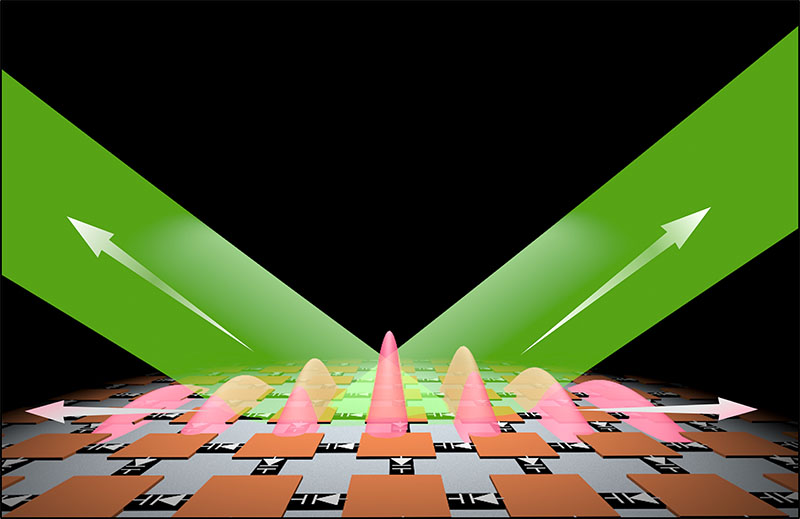| Apr 25, 2023 |
Metamaterials: Time crystal gives light a boost
(Nanowerk News) Time crystals, a subset of metamaterials, are synthetic materials displaying properties absent in naturally occurring substances. Conceived by Nobel Prize-winning physicist Frank Wilczek in 2012, time crystals diverge from conventional crystals by periodically altering their properties temporally rather than spatially.
|
|
Presently, photonics researchers are investigating the inaugural optical variants of these materials, termed photonic time crystals, which demonstrate promising applications in augmenting wireless communication signals and next-generation laser systems by effectively amplifying electromagnetic waves.
|
|
Dimensional reduction has facilitated the implementation of photonic time crystals, with prior studies predominantly concentrating on bulk materials or three-dimensional structures. However, actualizing bulk photonic time crystals has posed significant challenges, with experiments remaining confined to model systems devoid of practical applications.
|
|
Researchers from the Institute of Nanotechnology (INT), the Institute for Theoretical Solid State-Physics (TFP) of KIT, Aalto University in Finland, and Stanford University in the USA have devised a novel approach and documented their findings in the Science Advances journal. The team successfully produced the first-ever two-dimensional photonic time crystal, a remarkably thin metamaterial layer. Dr. Xuchen Wang, the study's lead author, notes that reducing the structure's dimensionality from 3D to 2D considerably simplified its implementation, enabling the realization of photonic time crystals.
|
 |
| A 2D photonic time crystal can boost free space and surface waves. (Image: Dr. Xuchen Wang, KIT)
|
|
The research has beenpblished in Science Advances ("Metasurface-Based Realization of Photonic Time Crystals").
|
|
The researchers designed and synthesized a two-dimensional electromagnetic structure with periodically embedded tunable components, dynamically repeating its electromagnetic property in time. They experimentally confirmed the theoretical predictions regarding the 2D structure's behavior and observed robust wave amplification in photonic time crystals for the first time.
|
|
The groundbreaking discovery has the potential to significantly advance technologies such as wireless communication, integrated circuits, and lasers. Enhancing electromagnetic waves may facilitate the development of more potent and efficient wireless transmitters and receivers. Additionally, coating surfaces with 2D photonic time crystals could mitigate signal decays in wireless transmission, a pervasive bottleneck issue. Moreover, 2D photonic time crystals may streamline laser design by obviating the need for intricate bulk mirrors typically employed in lasing cavities.
|
|
A crucial application stemming from the observation that 2D photonic time crystals amplify not only incoming electromagnetic waves in free space but also surface waves, which are utilized for communication between electronic components in integrated circuits. Dr. Wang explains that as surface waves propagate, material losses reduce signal strength. By covering the propagation media with 2D photonic time crystals, surface waves can be amplified, thereby enhancing communication efficiency.
|

